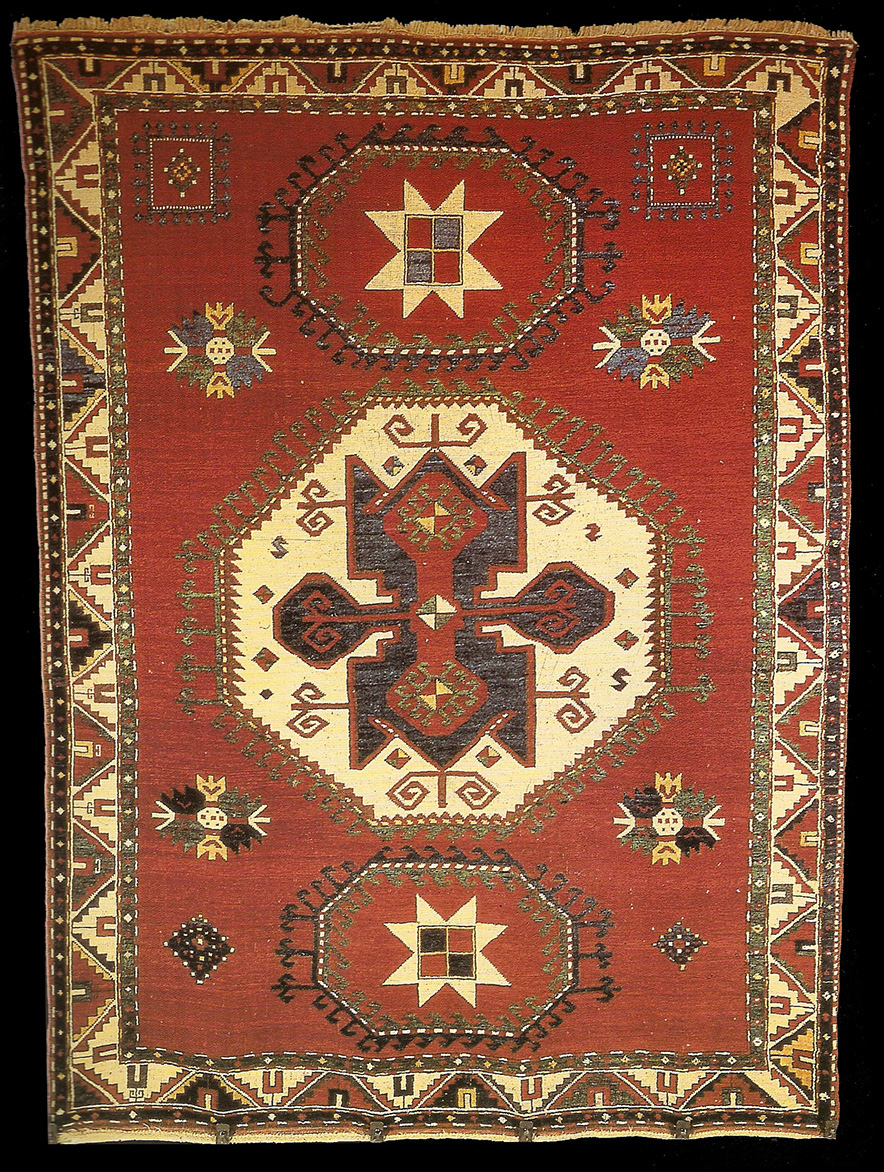This layout, with three superimposed medallions, the enlargement of the
elements and their sparse arrangement, denotes 19th-century production.
The octagonal medallion with a hooked profile on a white ground, enclosing
a traditional cruciform figure (derived from an ancient Central Asian
Turkic symbol), typically denotes the Lori Pombak carpets, so called after
the name of a historical disctrict and of a mountain range.
The
secondary medallions present a hooked profile, possibly an ancient symbol
meant to ward off the evil eye, and enclose an eight-pointed star, which
was probably an auspicious symbol.
The main border is decorated
with the recurring Caucasian motif of serrated leaves alternating with
tulips, here given movement by a lively interplay of colors. The white
ground, in particular, recurs frequently in this carpet type.
Worthy of note are the plain secondary borders embellished with small
geometric figures. The small inside border has no clear outline, as is
usually the case; instead, it becomes part of the field's decoration.
Lit: Enza Milanesi, The Carpet, p 120. |

